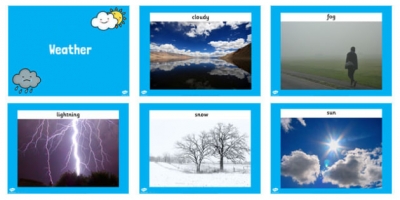
Weather is the state of the atmosphere at any given period of time. The atmosphere is made up of the gasses, like oxygen, that surround the Earth. What is happening in the atmosphere is the weather. Weather includes several different factors that we can measure. Sunshine, clouds, wind, rain, frost, and snow are some of the different weather conditions that we experience on earth. The Sun plays a major role in the way one set of weather conditions changes to another set.
Sunshine
Heat from the Sun warms up the air, creating dry, bright weather conditions. Most people find sunny days pleasant. With the absence of clouds, the sun is able to shine through and provide warmth. A sunny day doesn’t always mean it’s warm, though. Cold temperatures and wind can be present on sunny days.
Clouds
Sunlight warms water in lakes and rivers, turning it into vapor that rises, and then forms tiny water droplets that gather together as clouds. The amount of water in a cloud, the height, and the air temperature, all affect what the cloud looks like. There are three main types of clouds, stratus, cumulus, and cirrus, and lots of combinations of these.
Wind
The sun warms the air to different places. As warm air rises, cooler air rushes in to replace it, creating wind. Light winds, called breezes, rustle leaves and twigs. In stronger gusts, whole branches sway. Very powerful winds may snap or uproot trees and cause damage. A wind that blows most often in a particular area is called a prevailing wind.
Rain
Rain is droplets of water that fall from clouds. Heat from the sun turns moisture from plants and leaves, as well as oceans, lakes, and rivers, into water vapor, which disappears into the air. This vapor rises, cools, and changes into tiny water droplets, which form clouds. The water droplets in the clouds join together to form bigger drops. When the water droplets get too large and heavy, they fall as rain. Big, heavy droplets falling to the ground are called rain and small droplets are called drizzle. You know that it’s likely to rain when you see dark clouds approaching. They are dark because they are full of big water droplets that block out the light from the sun.
Snow
Snow is water that has frozen solid. Water is in the atmosphere in the form of water vapor. When there is a lot of vapor, clouds form, become heavy with water droplets, and then the water falls as rain. But if the temperature in the cloud is below freezing point, the water droplets turn into ice crystals, forming snowflakes, and fall as snow. In very cold weather, snowflakes fall as showers of powder snow. In warmer temperatures around 0 degrees Celsius, snowflakes join up to form big, fluffy clumps of wet snow. The heaviest snowfalls happen when the temperature is just below 0 degree Celsius.
Extreme Weather
We say that we have extreme weather when conditions are very different to those that we are used to. Extreme weather can suddenly appear without warning, and may last for hours or even days, bringing death and destruction to an area. Flooding, heatwaves, blizzards, hurricanes, and tornadoes are all types of extreme weather.
Picture Credit : Google



